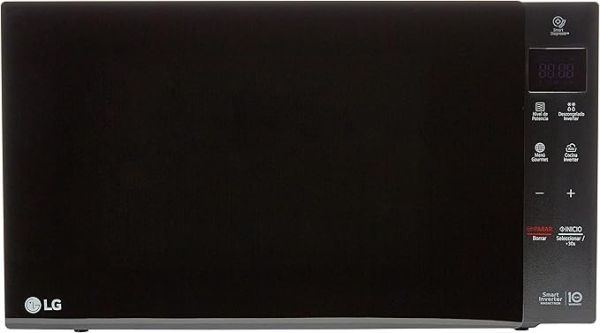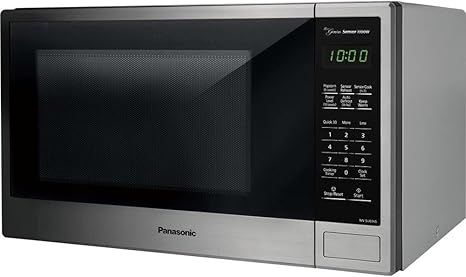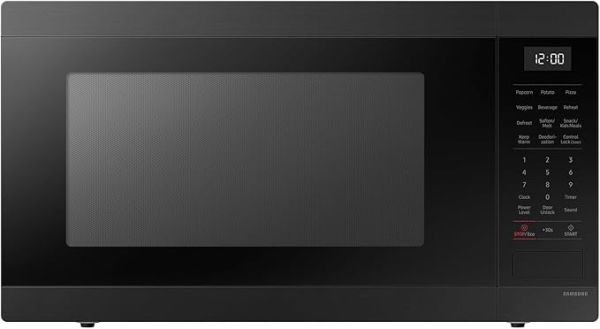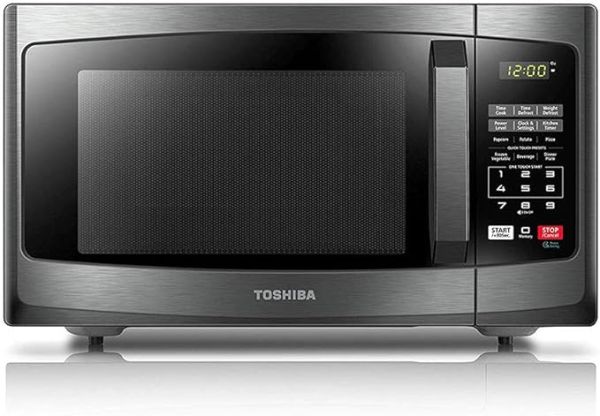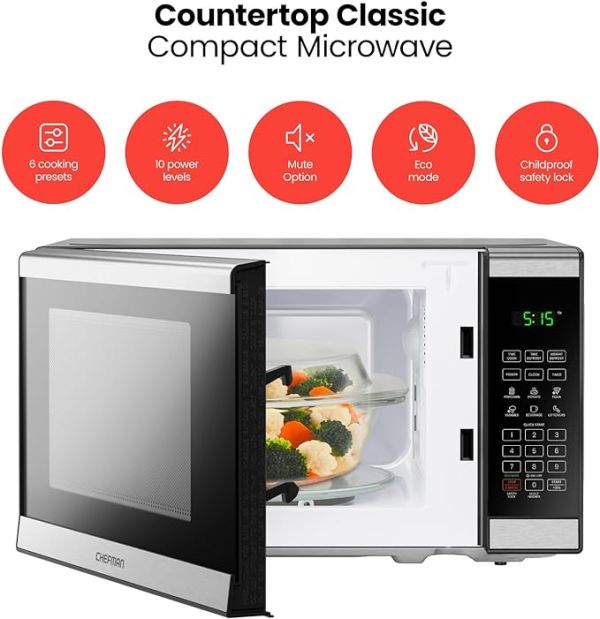How to choose a microwave oven

For many people, a microwave oven is an essential part of their kitchen. It allows them to warm up food quickly while preserving nutrients, making it easier and faster to complete various kitchen tasks. However, all microwave ovens have their own advantages and disadvantages, so it's important to know what to look for when choosing one.
There are different types of microwave ovens available, including tabletop models. These ovens are designed to fit on a countertop and are often more compact than other types. They may have additional features, such as a grill or convection cooking, but they still have a magnetron to generate microwaves for cooking.
When choosing a microwave oven, it's essential to consider factors such as size, capacity, and features. You should also think about how well it will fit in your kitchen and whether it has the features you need. With this guide, we'll look at different types of microwave ovens and help you decide what to look for when shopping. The standard microwave oven is a desktop appliance. It is a relatively large, rectangular device that comes in various sizes. Models range from half a cubic foot in capacity to more than two cubic feet. Microwaves with less than one cubic foot capacity are typically called compact. These can be used anywhere with a wall outlet, such as in kitchens, dormitories, and offices.
Desktop microwaves are available in a variety of sizes and styles, from simple and compact to multifunctional and larger. The wide range of prices reflects this diversity.
Numerous tests have shown that most popular brands perform well, so additional features like extra settings, easy-to-use controls, and mute functions can be important when choosing a microwave oven.
Benefits:
Easy to move
Offered in various price ranges
Available in a wide variety of styles
No special installation required, Minuses:
- They take up space on the work surface or table;
- Some models do not have a sufficient level of ventilation.
Built-in Microwave Ovens
Built-in microwaves, as the name suggests, are installed in cabinets, rather than being placed on the kitchen countertop. They are similar to regular microwaves in terms of functionality, but they offer more flexibility in terms of placement. Built-in microwaves come in various sizes, with some having an internal capacity exceeding two cubic feet. Affordably priced compact built-in are often designed for residential RVs.
Some built-in function similarly to desktop microwaves but are designed to fit inside cabinets. Other models are quite different, offering high-speed cooking capabilities and often being combined with wall-mounted ovens for integrated installations.
Such models can also be referred to as combined microwave ovens. These include a heating element for broiling or the ability to bake using convection, which makes them a viable (or even superior) alternative to many air fryers. Some models also offer features similar to steam ovens, toasters, grills, and preheat boxes.
Positive aspects:
- They do not take up counter space;
- Their location away from the stove top allows more people to cook at once;
- They have many convenient features and can replace several other appliances.
Negative aspects:
- The higher price;
- Special installation may be required.
Retractable Microwave Ovens
These microwaves replace one or more drawers in your kitchen cabinet. To use them, simply pull them out like a drawer. They function similarly to built-in microwaves but are typically installed below the countertop level. Unlike other microwaves, these models do not feature rotating turntables, which may result in less even cooking. However, this design also makes cleaning easier. Unlike table stoves, pull-out stoves do not take up countertop space. However, if you have difficulty bending over, using them may be challenging. Since pull-out microwaves are located near the floor, many models have child safety locks to prevent accidents.
These microwaves tend to be more expensive and less widely available compared to other models. They are usually 60 or 75 centimeters wide and have an internal capacity around 1.2 cubic feet. Unlike desktop microwaves, these models have a different design that can be a positive or negative depending on your needs.
Positive:
- They do not take up table space
- Due to the locks, they are safe for children
- They are easy to clean
Negative:
- They take up drawer space
- Their internal capacity is often small
- Heating may be uneven
- Special installation is required It may be more challenging for some people to access the controls; the cost is high.
Convection microwave ovens are a combination of a microwave and a conventional oven. They feature a magnetron to generate microwaves, as well as a heating element similar to that found in a regular oven, which is located near the fan. This heating element enables cooking in a convection microwave, similar to a traditional oven, while the fan ensures even cooking and better browning results.
Convection microwaves have many similarities with air fryers, although they are typically larger. There are not many compact microwave ovens that include convection, and those that do usually have more than one cubic foot of interior space.
These microwave ovens have several advantages, such as:
- More uniform cooking
- Better browning of dishes
- Crispier food
However, they also have some disadvantages:
- They are more expensive than comparable microwave ovens without convection
- They may not have the same power as a convection oven
- They might have fewer settings compared to a deep fryer
Ultimately, the most important consideration when choosing a microwave oven is to determine what features are most important to you. If you value uniform cooking and crispy results, a convection microwave oven may be the best choice for you. Although most microwave ovens have similar functions, and almost all of them (except the smallest and cheapest models) perform their job well, there are still some features that can distinguish them from one another. Keep these differences in mind when selecting a microwave oven.
Capacity is one of the main aspects that sets microwaves apart from each other. This can range from about half a cubic foot (15 liters) up to more than two cubic feet (60 liters or more). The smaller models may have difficulty achieving uniform cooking.
Microwave oven power can range from 600 watts to over 1200 watts. While these differences may seem significant, they are not necessarily crucial. Most likely, the most powerful microwave ovens will cook some dishes a little better, but that's about it. When buying a new microwave oven, an easy-to-use display is one of the most important factors to consider. Even the best models are useless if you can't understand their features. The display should be clear and intuitive. There should be a reasonable number of settings, and dials should be avoided if possible, as they can be difficult to operate.
Microwave ovens should also be easy to open, with a convenient handle for easy access. Models that use buttons to open the door instead of a handle can be difficult, especially on smooth countertops.
The mute function is a useful feature that should be included in any microwave oven. It allows you to enjoy a quiet snack or avoid waking others in the morning. Additional functionality is always welcome. The multifunctional microwave oven is incredibly versatile and can help you complete a variety of kitchen tasks. However, it's important to remember that even the most advanced microwave oven cannot completely replace a traditional oven.
Some microwave models have inverters, which allow for more precise power control. Unlike traditional microwave ovens, where the power settings simply turn the magnetron on and off, an inverter allows the microwave to run continuously at low power levels, providing smoother defrosting for delicate foods.
Are microwaves safe?
The safety of microwave ovens has been a topic of concern for many people. There are some terms that can be confusing or even misleading. Let's take a closer look. Microwaves are a type of electromagnetic radiation, which is part of the spectrum that also includes radio waves and visible light. Unlike these other forms of radiation, microwaves are not able to irradiate or contaminate food. When the microwave is in use, users are protected from non-ionizing radiation thanks to a metal screen located inside the oven.
The main risk associated with using microwaves for cooking is similar to that of other household appliances. It's important to follow the manufacturer's instructions carefully to avoid any potential hazards, such as burns.
Due to safety concerns, it's worth noting that microwaves don't cook food from the inside. Instead, food heats up from the edges and a little bit deeper, which can lead to uneven cooking if the center of food remains cold or undercooked. To prevent this, it's best to cut larger pieces of food into smaller pieces before heating them in the microwave. When used correctly, microwave ovens are completely safe. In fact, many studies have shown that this type of cooking preserves nutrients better than other methods, as microwaves heat food at lower temperatures, which can help retain nutrients that might otherwise be destroyed by higher temperatures.






